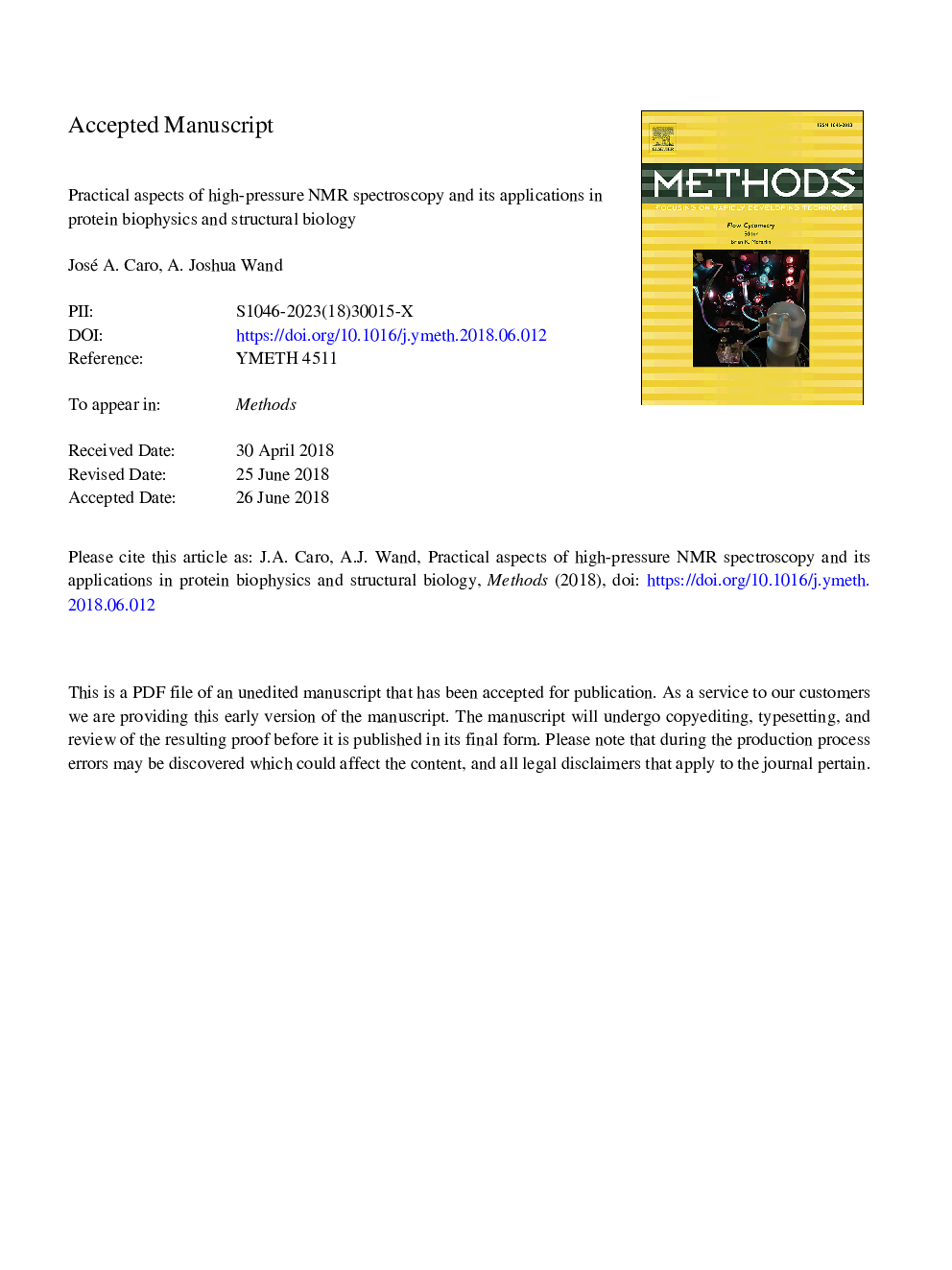| Article ID | Journal | Published Year | Pages | File Type |
|---|---|---|---|---|
| 8961933 | Methods | 2018 | 46 Pages |
Abstract
Pressure and temperature are the two fundamental variables of thermodynamics. Temperature and chemical perturbation are central experimental tools for the exploration of macromolecular structure and dynamics. Though it has long been recognized that hydrostatic pressure offers a complementary and often unique view of macromolecular structure, stability and dynamics, it has not been employed nearly as much. For solution NMR applications the limited use of high-pressure is undoubtedly traced to difficulties of employing pressure in the context of modern multinuclear and multidimensional NMR. Limitations in pressure tolerant NMR sample cells have been overcome and enable detailed studies of macromolecular energy landscapes, hydration, dynamics and function. Here we review the practical considerations for studies of biological macromolecules at elevated pressure, with a particular emphasis on applications in protein biophysics and structural biology.
Related Topics
Life Sciences
Biochemistry, Genetics and Molecular Biology
Biochemistry
Authors
José A. Caro, A. Joshua Wand,
